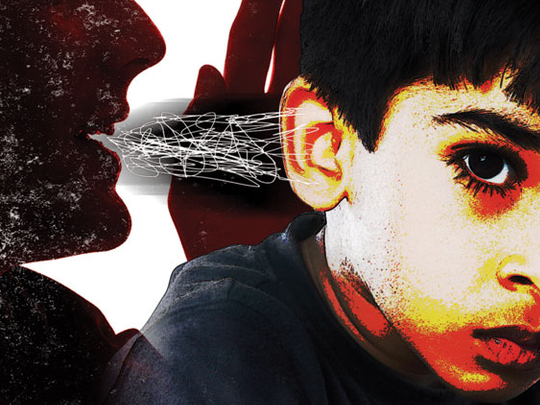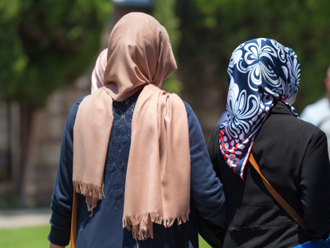
Palestinians are up-in-arms over the latest attempts by Israel to introduce its “homegrown” educational curriculum in Arab schools in occupied East Jerusalem. Ever since the current academic year started early last month, Palestinians have expressed their anger at the Israeli Ministry of Education’s decision to introduce the Jewish curriculum in five Arab schools in occupied Jerusalem.
This is part of an insidious plot, long-term plan and thin end of the wedge to “Judaise” Arab education and the final blow to the Palestinian educational system in occupied East Jerusalem. It is the start of the imposition of total Israeli cultural hegemony over the 207 schools in the city which have around 110,000 pupils.
The latest move to introduce Israeli curricula in the Sur Baher Boys School, Sur Baher Girls School, Ibn Khaldoun School, Ibn Rushd School and Abdullah Bin Al Hussain School can only be seen as a renewed step-by-step policy by Tel Aviv to introduce Israeli curriculum so it eventually will spread among all Palestinian schools in the eastern part of occupied Jerusalem. It is part of a trend that began in the 2011-2012 academic year when the Ministry of Education made a bold move to introduce the Jewish syllabus and strengthen its grip in occupied East Jerusalem, which is seen by many to be the future capital of a Palestinian state as part of an eventual negotiated peace settlement.
The latest move is a concerted attack on Palestinian identity because the pupils targeted are between 4th and 8th grades and who educationists argue are in the prime of the socialisation stages when the mind is fertile and can be moulded to accept any idea. Many Palestinians see the move as troubling, leading to “de-Palestinisation” and “de-Arabisation” of education. Palestinian parents, educationists, teachers and politicians are particularly worried about “Israeli” textbook cases introduced to these youngsters. Of particular concern is the issue of maps, making the Occupied Territories look like they are part of the state of Israel with biblical and Hebraic names replacing Arab names and geographical areas. Over the years, for instance, Al Quds, the Arabic name for Jerusalem, has been signed around the city as “Yerushalayim”, regardless of the Arab population of the city.
Then in the textbooks, there is the identification of occupied Jerusalem as the capital of the state of Israel, with the state being a bastion of democracy and human rights protected by a “security fence” rather than the concrete 142km Iron Wall around occupied east Jerusalem, splitting the Arab population of the city, who now require entry permits, and cutting it off from the West Bank, which is itself referred to in Israeli parlance as “Judea and Samaria”.
The Israeli term “Jewish Temple” is increasingly used instead of Al Aqsa Mosque, which is not only holy to Palestinians but to Arabs and Muslims all over the world. And of course there is no mention of occupation or the fact that Israel is slowly confiscating more Palestinian land, including the ones in occupied East Jerusalem.
It is no wonder that many see it as outright “brainwashing”, control of and onslaught on Palestinian culture, history and existence. And an imposed Israeli narrative on a population in contravention of the Fourth Geneva Convention, which states an occupying power has the responsibility for the welfare and education of the people it is occupying.
Up until the recent moves, there had been an implicit understanding: Schools in occupied East Jerusalem would continue to follow an “Arab curriculum”. Despite Israel’s occupation of Jerusalem and its annexation after 1967, and declaring the city its capital against the wishes of the international community, it could not introduce its own curricula — not for the want of trying, but because of resistance from the Palestinian population. Hence the Ministry of Education unwillingly relented. After 1967, it allowed locals to follow the “Jordanian educational system” till 1993, when it was transferred to the Palestinian National Authority after the Oslo Accords.
However, the going has been tough for Palestinians in occupied East Jerusalem. They have continually faced Israeli obstacles like house demolitions, which have increased because they require housing permits that are rarely given. Indeed it has been reported that from April 15 till the end of June, 12 buildings were demolished. In addition to that, permission to build more schools was denied.
Since 1967, Israel has been populating occupied east Jerusalem with Jews through colonies, amidst the predominantly Palestinian population that numbers slightly more than 370,000 people. There are eight major colonies, with 250,000 to 500,000 colonists.
Reflecting the socio-economic situation of Palestinians in occupied east Jerusalem, where 79 per cent live below the poverty line, the educational sector is in deep neglect as seen in poor facilities, lack of classrooms, over-crowding and need for maintenance. This is recognised by the Association of Civil Rights in Israel and even the Israeli High Court, which in 2011 ordered the Jerusalem Municipality to complete 2,200 classrooms by 2016. But the municipality continues to stall such moves due to the political situation regarding the city and its future.
The Israeli Ministry of Education itself runs around 54 schools in Arab east Jerusalem with a student population of around 40,000. Schools that are willing to teach the Israeli curriculum are offered incentives and benefits like more funds and there is an increase in salary for teachers willing to teach Israeli subjects. In addition, Israeli officials are playing on a number of psychological factors. When they meet parents, they stress that the Israeli curriculum is stronger, provides for better education, opens more doors to Israeli universities and the job market.
Palestinians educators and officials are sticking to their guns, but there is a much more sinister push from the other side.
Marwan Asmar is a commentator based in Amman.









